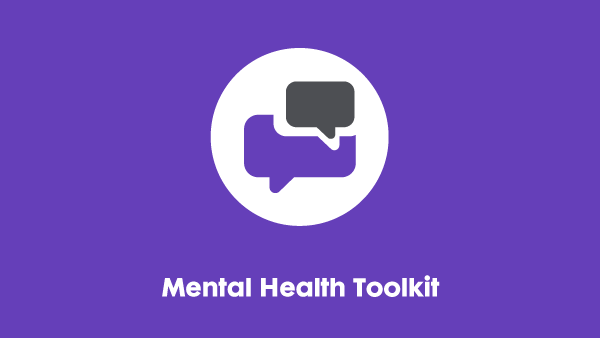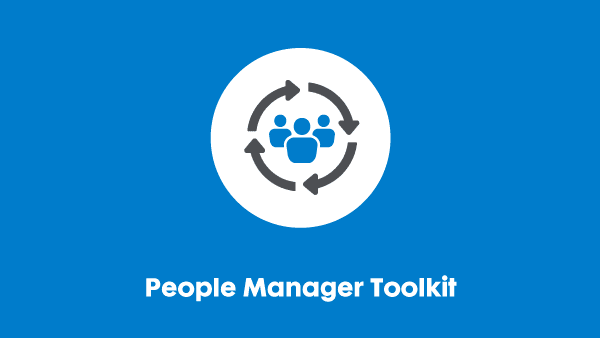Last updated: 19 September 2024
Having sensitive conversations
Managers need to know how to spot the signs that someone they work with might be unwell. They also need to know how to have sensitive conversations to find out what, if anything, is wrong so that they can act quickly and sensitively.
This resource provides guidance about spotting the signs, having sensitive conversations and maintaining boundaries and looking after your own mental health.
Starting sensitive conversations
If you have spotted that someone is not themselves or appears to be distressed, you need to talk to them as soon as possible. This can seem daunting, and you might be worried that you will make things worse. Don’t worry, you won’t – as long as you prepare for the conversation.
Before the conversation
Do your homework and find out:
- What your organisation’s mental health and workplace adjustment policies say. If the person needs an adjustment, what is the process that you need to follow and is there someone who can help you with it?
- What do you have the authority to do yourself? For example, can you authorise working from home or a later start to the working day?
- What support does your organisation have to offer – such as Employee Assistance Programmes (EAPs) or debt counselling services?
- Make a list of all the things that have concerned you with dates and times. If you are concerned about sickness absence or lateness or missed deadlines, know the dates and times and reasons given by the person.
Don’t worry if you are asked something you don’t know during the conversation. Just say that you don’t know but you will find out.
Choosing the time and place
Time and place are very important.
- Choose a time when you know that both of you can speak without distractions. If one of you has to rush off to another meeting or pick up the kids, for example, you won’t be able to give this conversation your full attention.
- Try to make the meeting in person if you can but pick a quiet space where you won’t be overheard and preferably seen.
- If you can’t meet in person, for example if your team works remotely, try to video call when you can both be in quiet and private places. Read our analysis of video conferencing apps for more information.
- Try not to cause any alarm by making the meeting seem out of the ordinary. Don’t send the meeting request with high importance or suggest that you have something urgent that you need to talk about – but don’t put off having the conversation either. A casual “let’s have a catch-up” and then fixing a time and place is best.
- Don’t choose a time just before a non-working period for either of you – for example, before a weekend or annual leave – to avoid a long wait while they worry if you need to come back to them on anything.
At the meeting
- If you are meeting in person, try to sit so that you are at right angles to each other rather than facing each other across a table interview style.
- Shop floor or coffee shop? Think about your relationship with the individual and don’t be afraid to move the meeting off-site if it would be more appropriate to do so.
- Some people find it easier to talk when they aren’t looking at the person directly so you could suggest a talking and walking meeting if you think that would be more effective.
- Start with an open question – for example, “how are you?” However, be prepared for the reply, “I’m fine.” Be ready to say, “I’m concerned that you’re not fine because” and then have examples ready, for example:
- “Yesterday afternoon I thought you were going to cry in the meeting.”
- “You’ve missed several deadlines recently and that’s not like you.”
- “You were very angry with X.”
- “You’ve had X number of days off sick in the last two months.”
Be prepared to give concrete examples.
Be prepared for the response
- Some might respond defensively. You will need to reassure them that this is not a disciplinary meeting. Tell them that you want to help if you can.
- Others might cry. If they do, just let them cry. Sitting and waiting while someone cries is difficult but try to resist the temptation to rush to get water or tissues or assistance. Let the person collect themselves and ask gently if you can carry on. If they say no, say you’ll fix another time in their diary to carry on with the conversation.
- The person might get angry. Try to remain calm and reassure them that this is not a disciplinary meeting and you’re trying to help.
- In some cases, the person might insist that there is nothing wrong and that they are fine. They might apologise and assure you that any past performance or behaviour issues won’t happen again. You will have to accept this – but if the situation doesn’t improve you will have to arrange another meeting to talk about their performance or conduct. At that meeting they need to understand that if they don’t tell you what’s wrong you can’t help them, and the next step might be performance improvement.
- How much they tell you can depend on how much they trust you and the culture of your organisation. Will they be supported or is this a route out of a job?
Remember you don’t need to have all the answers. It’s okay to say that you will find out and get back to the person. If you need to talk to someone else in the organisation – for example, HR – tell the individual this. Ask them how much you can share with that person.
Don’t leave the person waiting. If you have to arrange another meeting or to get back to them about something, put a date in their diary as quickly as possible so they know when you will talk to them again. Try not to leave them waiting over a long weekend and try not to cancel the meeting you have scheduled with them. If you do have to cancel or postpone, give them your reasons and reassure them with a new date and time to talk.
Considerations for remote workers
Sensitive conversations can be trickier if you or your team work remotely. While for some people it may be preferable to have the conversation in person, don’t put off holding the conversation until you and the person will be back in the workplace if this could mean a long wait.
Here are some key considerations for having a sensitive conversation remotely:
- Keep both your cameras turned on during a video call. Some people may prefer to talk without video, but this can make it harder to read body language and other cues that indicate how the person is feeling. Equally, it can be harder for them to feel supported if they can’t see your body language. This can be true even if one of the people on the call doesn’t see well or has sight loss.
- Body language is very important. Make sure they can tell that you are listening – for example, by making regular eye contact with the camera, nodding or making listening noises such as “hmm.” Make sure they can see or hear that you are engaged in the conversation. Try not to lean back in your chair or fidget, check your phone or put yourself on mute because you are talking to someone else.
- Choosing the right platform for a video call is important. Try to keep it professional – for example, if your organisation has a workplace video call platform (such as Teams or Zoom) use that instead of something more informal like a WhatsApp video call.
- People working at home may worry about people they live with overhearing a sensitive conversation. This could be because of privacy or embarrassment or because of concerns around domestic abuse. Look for signs that the person is worried about someone overhearing – for example, regularly looking away at a doorway or speaking more quietly than usual. Offer to have the conversation at another time when they can speak without people around.
How to talk about mental health
As a manager you might sometimes feel unsure of what to say or how to say things. The fear of saying the wrong thing or inadvertently giving offence might even lead you to avoid talking to someone with a mental health condition.
However, it is much better to try to talk to someone than to avoid the conversation. Try not to let fear of saying the wrong thing deter your from talking. Remember that your intention is much more important than the words and phrases you use.
If in doubt say “I don’t know if this is the right way to say this” and the person you are talking to will correct you if they think it necessary.
Top tips
Do
- Use positive body language. Try to keep your arms and legs unfolded arms and face the person directly.
- Smile. This will help to put the person at ease, and they will be more likely to ask for help if they need it.
- Speak in a positive and friendly tone.
- Be patient and listen attentively.
Don’t
- Ask personal questions such as “what happened to you to cause this?” The person might not wish to share this information with you.
- Be concerned if the person you’re talking to doesn’t want to look at you or won’t make eye contact.
Words or phrases to avoid
Think about the language you are using. Some words or phrases can reinforce stereotypes and cause offence and should be avoided. Some examples are:
- Negative terms such as ‘victim’, ’crazy’, ‘looney’, or ‘mental.’
- Language which disempowers disabled people and implies vulnerability, frailty or
dependency. - Collective nouns such as ‘the mentally ill’ or ‘schizophrenics.’ They emphasise the impairment and suggest that people are part of a uniform group, rather than individuals with their own needs and preferences.
Words or phrases to use
- Use ‘disabled person’, or ‘person with a disability’ or ‘someone with a condition’ – for example, ‘someone with a mental health condition.’
- Use ‘has’ rather than ‘is’ when speaking about someone else’s condition or impairment. So “Steve has depression” rather than “Steve is depressed.”
- And remember – it is always a good idea to ask the person you are talking to how they would like you talk about their mental health condition.
Maintaining boundaries
You also have a responsibility to yourself to stay well and professional in the workplace. It is your job to talk to people who work for you about how they are feeling – but it isn’t your role to become their best friend and you are certainly not their therapist. It is important to maintain boundaries at work. This is true even if you socialise with colleagues you manage outside work. You are still their manager.
If you get too drawn into someone’s personal life, it can be difficult to make the decisions you need to make as a manager. It can also start to impact on your own mental wellbeing. The one thing you really must not become is a pseudo psychologist or therapist. Even if you are a highly qualified mental health expert, your job as the person’s manager is different and a blurring of those boundaries can be counterproductive. If you have an EAP, suggest that they talk to an adviser. They can also see their doctor.
Keep the conversation focused on work
It isn’t always easy to maintain those boundaries. If you ask someone how they are, they might tell you about problems they are having at home which are causing or contributing to their mental wellbeing. Do listen – but keep focused on your role as their manager. Always bring the conversation back to work by saying something like “I’m sorry to hear that. Is that why you were late for that meeting? What can we do to make sure that doesn’t happen next week?”
Remember that all the advice in this resource also applies to your manager. You need to be able to talk to your own manager and feel that you will be supported. If they haven’t read it, perhaps you could share it with them.
If you require this content in a different format, contact enquiries@businessdisabilityforum.org.uk.
© This resource and the information contained therein are subject to copyright and remain the property of the Business Disability Forum. They are for reference only and must not be copied or distributed without prior permission.


